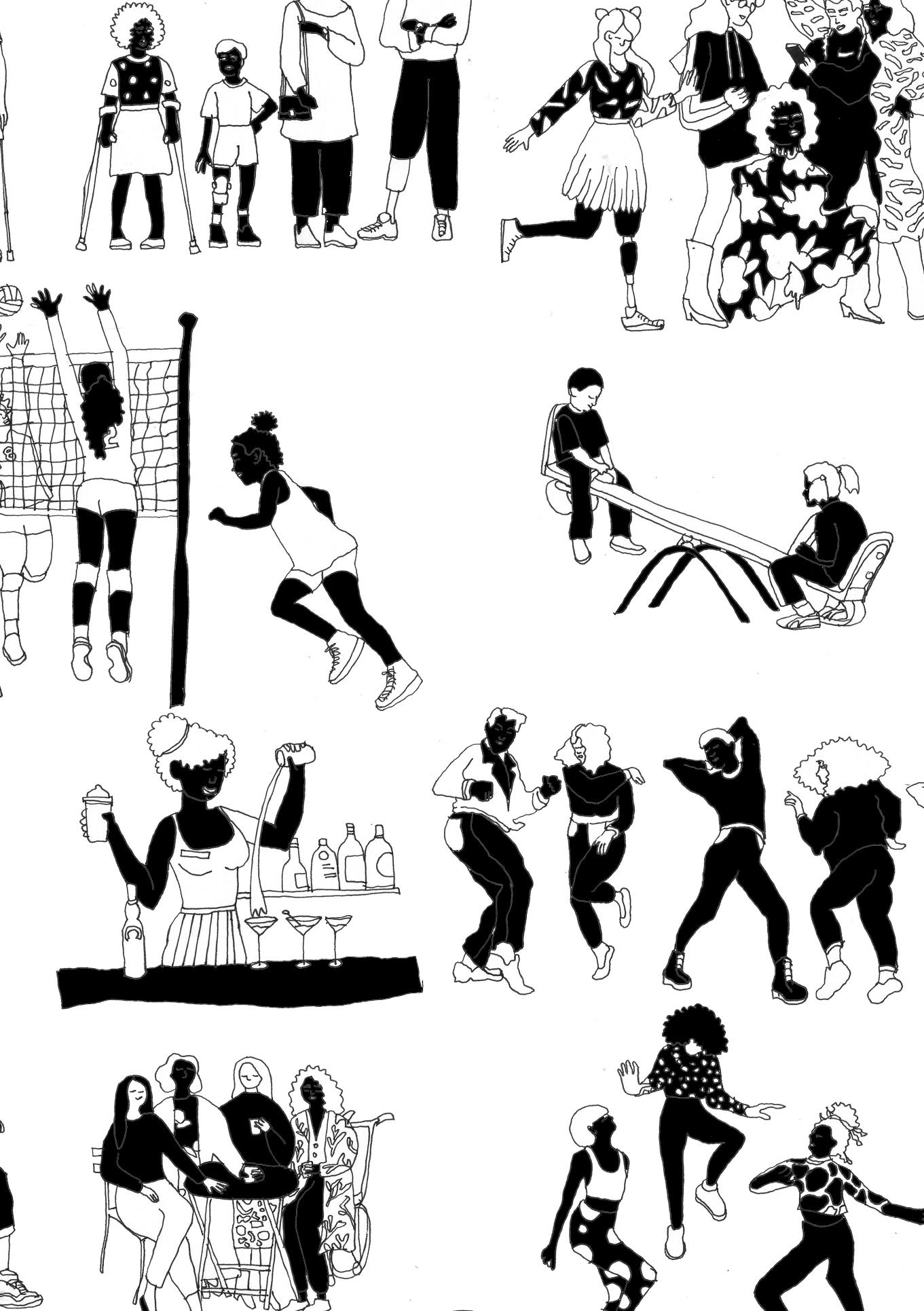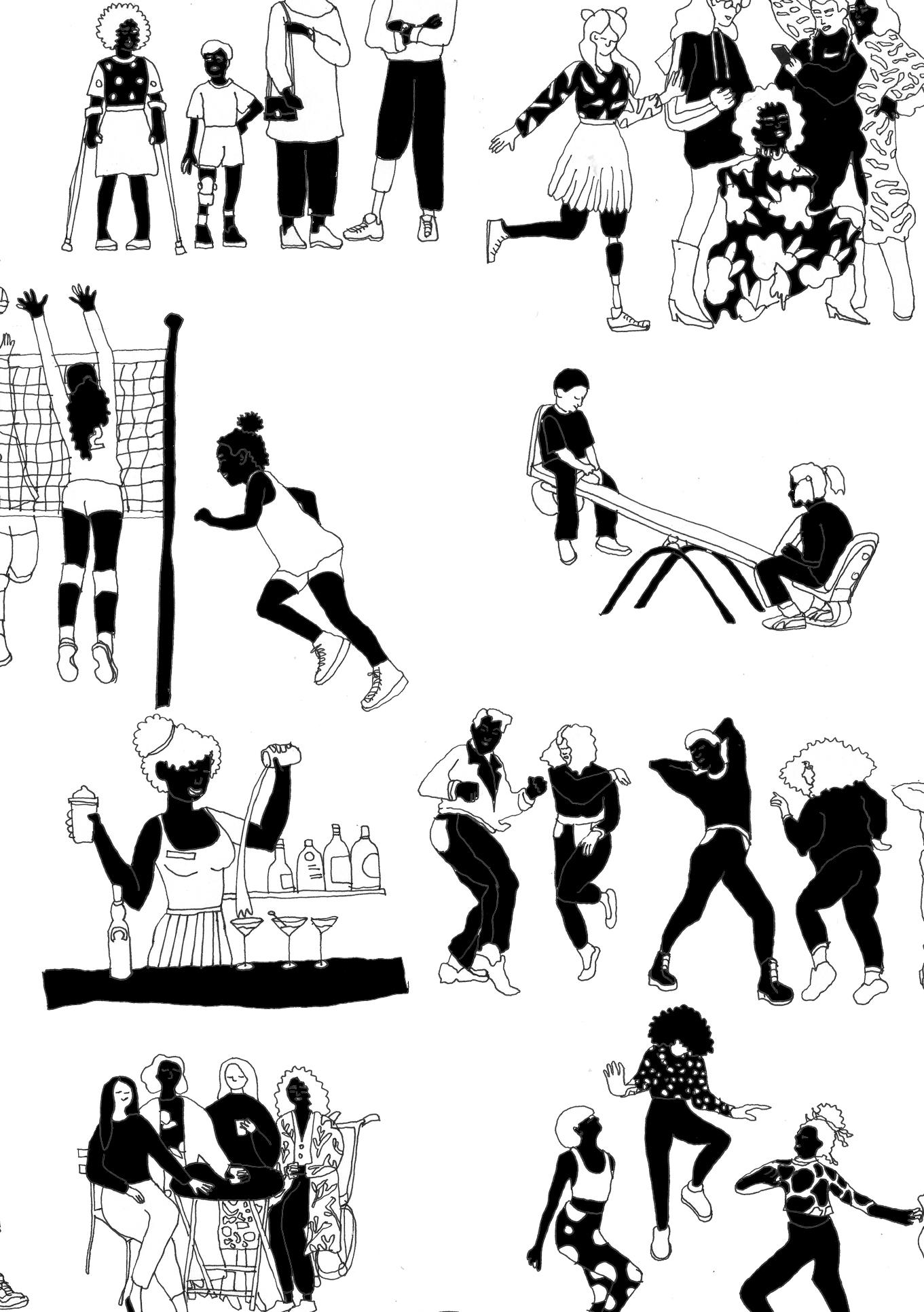






The Right to the Streets initiative is founded on the belief that everyone has a role to play to make our streets, parks and public spaces safer, more joyful, welcoming places and that this is critical to enable healthy, happy, active lives for all.
We set out to create a partnership of people and organisations that could support each other to take tangible strides for change on the issues that restrict the freedom of women, girls and gender diverse people to move about our streets and public spaces without fear. Statistics and stories tell us that many women, girls and gender diverse people do not feel safe to move freely around our streets, parks and public spaces, especially after dark and when on their own, due to fear of sexual harassment, violence and unwanted attention.
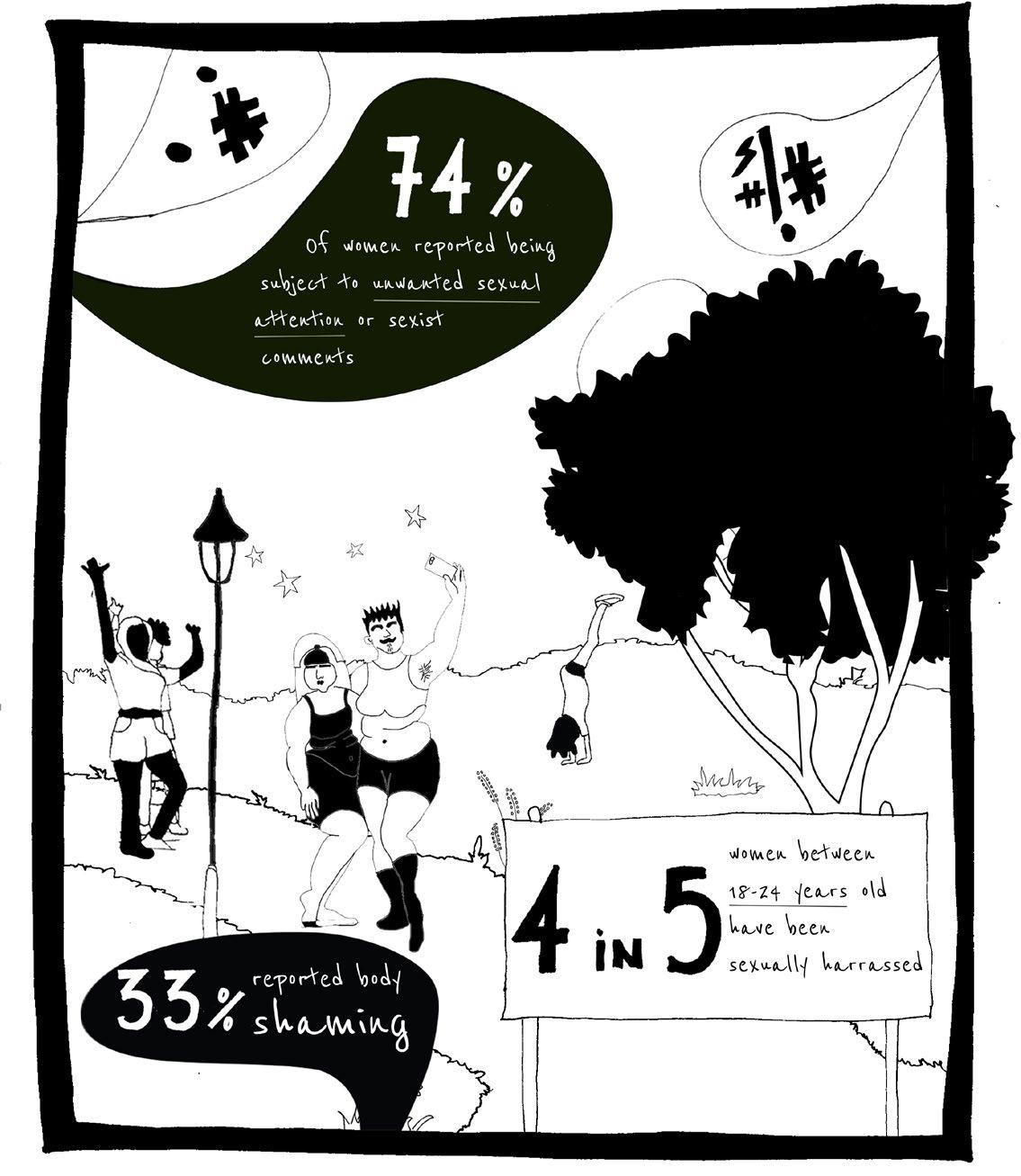
We’ve heard how this curtails the way people live and move, limiting access to active and sustainable travel and participation in activities that promote individual and collective social and economic wellbeing.
In Greater Manchester people and partners are working together, as a movement for movement, to enable active lives for all, under the banner ‘GM Moving’. One of our shared key commitments, as set out in our strategy, ‘GM Moving in Action’, is to work together to create healthy, active places and spaces where everyone feels they belong. We’ve learnt that an effective way to do this, is to create a clear invitation for communities and cross-sector organisations to work alongside each other, at a local level, to do what they can, (individually, collectively and systemically) where they are, with what they have - drawing on their insight, relationships, resources and influence. We describe this as a whole-system, strength-based, place-based approach.
We wanted to draw on this learning, to address the problem of violence against women and girls on our streets, thereby pioneering a different approach to the mainstream response which commonly focuses on installation of CCTV, security lighting and increased police presence. We wanted to create streets and spaces where all women and girls, and gender diverse communities, feel safe, feel they belong, are invited to be active and can experience the joy of the journey, in the belief that there are small shifts we can all make today, which can help shift culture, systems, structures and behaviours.
Over its first year, between September 2022-2023, the Right to the Streets partnership centred in North Trafford, home to approximately 12,000 residents. The area attracts huge numbers of visitors as the home to Manchester United Football Club and Lancashire County Cricket Club as well as Trafford town hall, several schools, Trafford College, University Academy 92 and an array of parks, community centres, leisure centres, places of faith, shops and businesses. Local partners in the area, including Trafford Council, were keen to kickstart the approach in this area following a series of sexual assaults on women in 2021, along the Bridgewater canal which runs through the area.
GM Moving’s work and experience has pointed to some key enablers and ways of working as being critical to a successful place-based approach to addressing a complex issue, like physical inactivity or violence against women and girls. These enablers were therefore intentionally designed into the approach from the start to:
• Listen to, involve and resource local people.
• Centre the most marginalised voices, with an intersectional lens on power and privilege.
• Bring together people and cross-sector partners on an equal footing, as experts by experience and by trade, to learn, co-create and co-deliver a diverse, dynamic, energising array of activities for people to get involved in.
• Facilitate a test and learn approach, with on-going reflection embedded throughout the process.
• Demonstrate the potential to make a difference, at pace, by growing distributive leadership, networks and movements as effective mechanisms for rapidly rippling change.
• Develop, strengthen and grow effective and trusted processes, governance, partnerships and spaces to advance this work.
• Share effective models and ways to involve people and partners at scale to play their part in delivering a shift to the cultural, policy, physical, social and behavioural norms which perpetuate sexual harassment in public spaces.
• Through participation, support men and boys to be the change we want to see, equip people with tools and understanding to act, and support women, girls and gender diverse communities to move from fear to freedom.
This work is deeply personal. And the issues we seek to address are deeply rooted and pervasive. This is heart work, art work and hard work. Holding this work and the people involved with care is therefore critical. And try to make the invite to join irresistable!
This is just the beginning. We hope this work acts as a catalyst for longer-term action. Both what we did, and how, were designed to create ongoing ripples – to grow learning, inspiration and connectivity for sustained and systemic reimagining and change.
‘Right to the Streets lives on, constantly!!
The work we did has become a bit of a landmark and really well received. I’m incredibly proud to have been part of it. Legacy lives on!’
These streets are ours
Whatever the hour
Ours to jog, march and play
Any time of the night or day
These streets are ours
Whatever we wear
In heels, pumps or boots
Whatever our roots
These streets, parks, public spaces are where we belong...





Individual Social networks
Organisations and institutions
Physical environment
Behaviour change
Test, learn and act together



The whole system approach was adopted from the start to structure the Right to the Streets activities, with streams of work intentionally designed at each level of the system.
This work is deeply personal. Participating in this work impacts us individually. We want to ensure that impact is positive and empowering – moving away from approaches that further burden, harm, disempower and exclude women, girls and gender diverse communities, or demonise men. We want to shift towards forms of participation that liberate, heal, equip, include and rehumanise. Building individual capability, motivation, opportunity and resources to take informed action, with care. We’ve tested a number of ways to do this including participatory walkabouts, active bystander training, and spaces for individual reflection and self-expression. We spotlight two of these below.
Open Data Manchester (ODM) invited the local community to a series of walkabouts where they engaged with local residents, community groups, schools, and the local authority workforce to explore their feelings about, and lived experiences in Trafford.
They designed and conducted a survey to gather residents’ perceptions and experiences, focusing on favourite streets, descriptions of streets, and changes in walking routes. The outputs from this survey informed the walkabout mapping workshops, which delved deeper into safety, physical and social activity and belonging. Participants mapped out routes, highlighted places of interest, and discussed their experiences.
Throughout the project, ODM engaged with 56 women and girls from different age groups, ethnicities, abilities, and socio-economic backgrounds. They also identified recurring themes from workshops they facilitated, including issues relating to street lighting, ease of crossing roads, anti-social driver behaviours, the look and feel of streets, parks and green spaces, and the sense of community. Similarly, they developed six profiles representing participants’ behaviours, frustrations, and needs. These personas were used in the development of the campaign and Legislative Theatre to help create awareness of how women and girls navigate the urban environment.
The personas developed through these walkabouts will continue to inform workshops and local area actions relating to women’s safety and gender inclusion. The key insights will be published in an open access format, and will be an exemplar approach for future projects.
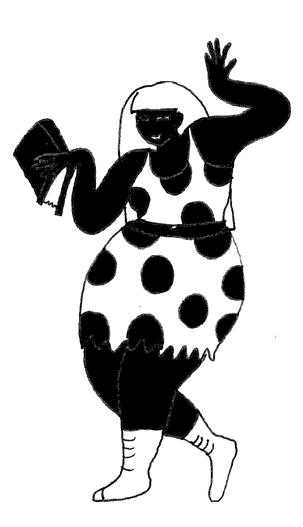
56
Throughout the project, Open Data Manchester engaged with 56 women and girls of different age groups, ethnicities, abilities, and socio-economic backgrounds.
Open Data Manchester engaged with four community centres and different groups including gardening, community collectives, resident WhatsApp and Facebook groups

Events
Open Data Manchester hosted a total of 23 events, including:
• 14 workshops
• 6 sharing sessions
• 3 joy diversions

4
Open Data Manchester engaged with 167 people who mapped Trafford.

23
Freedom Personal Safety (FPS) was commissioned to deliver ‘How to be an Active Bystander’ workshops to people living and working in north Trafford including sessions for businesses, Transport for Greater Manchester (TfGM), sports and community groups such as Lancashire County Cricket Club and the Manchester United Foundation, colleges, school nurses and the general public.
FPS has built community awareness of the impact of sexual harassment and strategies to tackle it. The biggest impact of the training was raising the awareness, confidence and knowledge of participants to intervene when witnessing public sexual harassment. Freedom Personal Safety carried out a pre and post workshop survey and 100% of respondents had increased knowledge of the options for intervening as an active bystander. The key learning is that conversations, engagement and participation is what brings the content to life. People generally want to help others but often don’t feel equipped to intervene. By coming together, Freedom Personal Safety allowed participants to explore the issues, share experiences and understand that there is more than one way to take action.
We are already seeing the ripples across Trafford, Greater Manchester and beyond. For example active bystander tips and messaging is being rolled out across TfGM workforce and as part of their public travel safe campaign at bus and metro stops across the BeeNetwork. Building on the success of this project, FPS have been awarded funding to deliver this training in West Yorkshire. The priority is to find ways of reaching more people and raising greater awareness of how to be an active bystander. The top recommendation from the Legislative Theatre was to further roll-out active bystander training in Trafford and across Greater Manchester. Work is underway to realise this ambition. The more people understand the dynamics of street harassment and the options to respond, the safer our streets will become.
Freedom Personal Safety delivered 26 ‘How to be an Active Bystander’ sessions to 310 people.

Settings

Freedom Personal Safety delivered training sessions in 14 different settings and with 11 different organisations including 6 community groups, 5 businesses, 1 NHS group and 1 college. Trafford Council hosted 5 sessions via their safeguarding team which attracted teachers, nurses and other community groups and 2 sessions for the general public.
Feedback was overwhelmingly positive with 99% of participants that completed the feedback exercise responding ‘yes’ to the question ‘would you recommend the workshop to a friend/colleague’.

Participants have used the knowledge and confidence gained from the training in real life situations. A male participant shared that he caused a distraction on a tram where a male passenger was harassing a teenage girl. He disrupted the behaviour by exaggeratedly removing his backpack and causing the harasser to take a step back. He smiled at the teenage girl and remained nearby for the rest of the journey. The harasser moved away. He shared that the action he took was a result of attending the Freedom Personal Safety training. This case study has since been incorporated into the workshops.
‘We are hoping to cascade this training down to our teams as there are some amazing tools and knowledge that would be beneficial for our staff’.
‘Be confident to intervene if I ever witness sexual harassment by using the ‘distract’ method.’
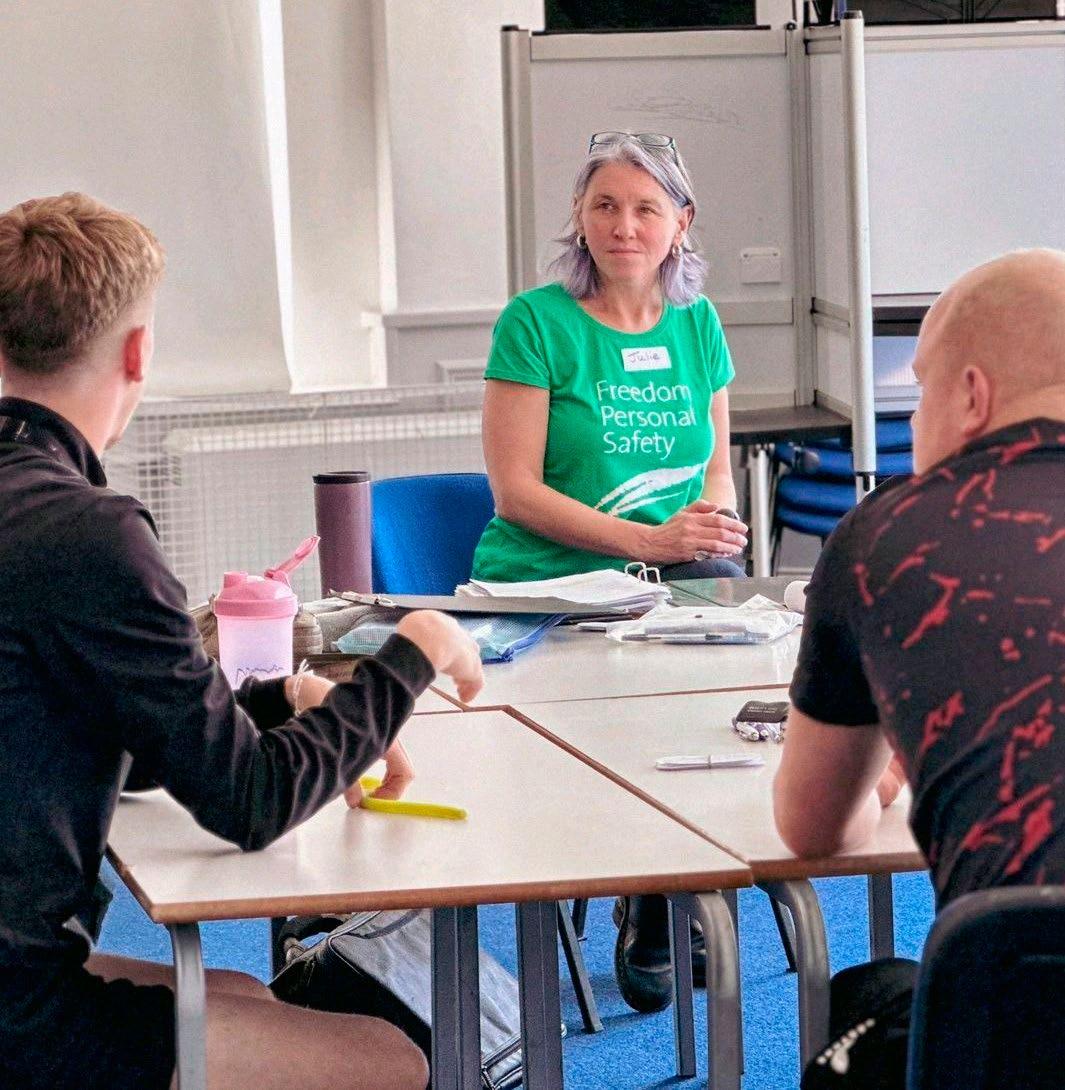
We know our behaviours and actions are heavily influenced by our social networks and relationships with our peers, friends, family and neighbours. We therefore sought to create the resources, spaces and conditions for people to come together across both new and existing informal networks, e.g. as local residents groups, to try different things out together and to strengthen social awareness and ties in place.
In April 2023, Greater Manchester Moving convened residents, partners and stakeholders to understand where people walk, wheel and cycle and what they would like to see for walking, wheeling and cycling in the area. From the contributions of over 40 people, along with insight from the Open Data Manchester walkabouts and ideas from the October launch event, a meeting with delivery partners was arranged to develop an action plan for the work. The aim was to provide opportunities, inspiration, and confidence to support women and girls to walk, wheel and cycle in the area and feel they belong on the streets and public spaces.
So what?
By understanding the issues that were important to local people, the project was able to develop a short, medium and longer-term action plan that reflected the needs of women and girls in the community. The plan aligned with wider projects and programmes led by Trafford Council, Seymour Park Community Primary School and other partners. This allowed Greater Manchester Moving to identify walking advocates and connect them to ongoing work to progress the School Street implementation at Seymour Park Primary School and develop safer streets for walking and wheeling around the area. Several new walking activities were funded through the community grants fund including mindfulness walks for women, blue plaque walking groups, and creative walking art trails. Connections were made across the wider partnership to other grant funded groups and arts based activities as well as existing organisations offering ongoing walking opportunities. Walking, wheeling and cycling route maps were developed by the community, led and coordinated by Love Old Trafford, with women in mind.
Now what?
12 participants took part in the GM Walking Festival, Walking Recipe walk in Old Trafford. Out of the 12 participants, two were male, 10 female and two were the walk activity leaders.

12
12

12 community groups were involved in developing and testing 9 new local maps:
• 3 walking and wheeling routes around Old Trafford
• 3 walking and wheeling routes around Gorse Hill
• 3 cycling routes around North Trafford
The cycle training was part of a wider community event involving over 150 people. To achieve this, the Community Connector introduced the Asian women’s group to the female cycle instructor to establish a local relationship. This event was funded through community grants.
Seven women attended the course led by Bee Pedal Ready. Representing a wide age and demographic range, the participants loved being in an environment where they felt heard. Thanks to the session, they grew in confidence and shared stories of their experiences on bikes and not feeling confident on the road.
150

7
On the basis of the work delivered so far, Greater Manchester Moving will distribute the developed maps into community locations and promote the maps to Greater Manchester networks through Greater Manchester Walking, Right to the Streets and Greater Manchester Moving channels. The digital versions of the maps will also be shared on the Right to the Streets resource hub. Greater Manchester Moving will share insights derived from the walkabouts with Trafford Council Public Health which can in turn influence future capital improvement works in the area. For instance, Seymour Grove does not have any pedestrian crossing conneting Lime Grove, Trafford Wellbeing Centre and the shops to Seymour Park. Similarly wayfinding is an issue coming out of Trafford Bar Metro station. The walkabouts also stressed the need for transport planners to acknowledge and understand how it feels for women to walk to Old Trafford Metrolink station from the Ayres Road side. The land use along Ayres Road changes from residential at the Seymour Grove end to more industrial at the Old Trafford Metrolink end. There are high walls with barbed wire fencing, graffiti on the walls, derelict buildings, fly-tipping and not many overlooking buildings. There are a few industrial units and a small mosque and the Metrolink depot at the metrolink end. There are few people walking along most of the time (except on event days at Lancashire County Cricket Club) and there are often groups of men talking outside the industrial units.
Greater Manchester Moving will share assets from Right to the Streets to support the Beat the Streets community walking game in Spring 2024. This will include locations of murals from the project, walking, wheeling, cycling route maps and groups that have been engaged with through Right to the Streets. This is intended to support the growth of active movement in the area by all sections of the community. Greater Manchester Moving will also continue conversations with Transport for Greater Manchester, Greater Manchester Ageing Hub and local authorities around a person-centered approach to urban design to make spaces and their linking transport infrastructure safe, accessible and inclusive.
‘These localised maps are great, we could learn from this in conversations about Manchester becoming a child-friendly city.’
‘There’s a colourful surprise around every corner! As a result of testing this route I’ve discovered a quieter route to Stretford that I feel much safer cycling along.’



1.
2.
3.
4.
5.
2.
3.
4.
1.
To


Local organisations have a significant role to play in the way people feel about their place and community and in influencing people’s behaviours. Schools, colleges, healthcare centres, shops, community groups, services, workplaces and faith organisations are often a trusted source of both formal and informal information and communication and provide influential hubs where people convene, learn and act together. Finding ways to work with, and invest in, local groups and organisations that are important assets and anchors in the area was critical to our approach.
As part of the Right to the Streets community outreach, Verity Gardner was appointed as the Community Connector, employed by Trafford Community Collective, to lead on the community grants fund and build connections between organisations in the area. Working on the ground in North Trafford, Verity worked to connect with local residents and community groups. Through her work, £17,500 was allocated to individuals and groups in the community to deliver community projects that would contribute to more active, safe and gender inclusive public spaces. All 21 community groups that applied were funded and delivered a project to include: Seymour Soundwalk; Our Goal; Brew on a Bench; Forest Bathing; A Women & Girls’ Garden Mural project; Girls Growing Great; Old Trafford Heritage & History project; Family Fun Day Bonanza; Kick Out Knife Crime; Mindful Walking Trail.
So what?
This project impacted a great number of local people who already had creative ideas, but were lacking financial support to bring them to life. The grant funding enabled people to explore their ideas, which participants found very rewarding. The project shed light on the genuine sense of community, ownership of space, appreciation of people and creative ways to engage. Right to the Streets brought the community together; it is a catalyst for change, for connection, for new projects and new ways of working. It gave opportunities for people to explore and develop their ideas and aspirations. It was fun, it was real and it had gravitas.
Verity Gardner will maintain the relationships she has forged on the ground in order to best support the community in which she lives. Through social awareness, connection, movement and the arts she intends to offer new activities for people to try, such as bringing yoga classes to everyone in North Trafford; doing regular events and exhibitions to tell stories of people’s lives and experiences and bringing people together. Her new role is working with Ageing in Place, and she will use the knowledge and experience of Right to the Streets to support working with older adults in North Trafford.
The project saw 21 successful Community Grant applications (both fully and partly funded). These collectively contributed to the development of over 150 different community-led activities. These ranged from individuals making their alleyways clear, clean, painted and planted to 5 Saturday sessions of women and girls football, to heritage and history events, to forest bathing, yoga in the park, sound walks and family fun days. All bringing a sense of belonging, movement and creativity.

150

Around 1,000 people participated in grant-funded community-led activities. This included street-level activities, recurring workshops, small events and large community gatherings.
Through the community grants, all 21 community groups deliver activities in the community.

Ella was the first person to apply to the Community Grant application by sharing a YouTube video of herself. As soon as Verity Gardner watched the first 30 seconds of the video she knew Ella’s will to participate was something special and completely in line with the essence of Right to the Streets. When Verity first met Ella she was so enthusiastic and engaged with the project. Ella’s application was the first application that was shared with the Right to the Streets panel to show the quality of interest in Right to the Streets.
Ella shared her personal experience of being made to feel vulnerable in the street and how football (and the community surrounding her experience of football) has given her confidence and helped her find her voice again. She wants to share this with other women and girls.
‘Park football was a huge success! In the end we created safe spaces for girls and women to play recreational football for 20 hours. At least 2 of the girls on the park football programme joined competitive teams in mid-September, and one of the mum’s told me on week 5 that the improvement she has seen in her daughter’s confidence over the 5 week period had been ‘phenomenal’ (her words!).’

The physical spaces we spend time in and move through, affect the way we live and what we think, feel and do. Spaces and places are too often designed without women’s experiences in mind. By centring women’s experiences, in their diversity, and resourcing women as place-makers, we can create safer, more welcoming and joyful spaces that enable us all to live better. This includes small, low-cost, immediate changes we can make today drawing on people’s creativity, talent and imagination.
7 local arts organisations co-designed and delivered 64 different workshops and events, engaging with over 750 people ranging from ages 2-93 years old.

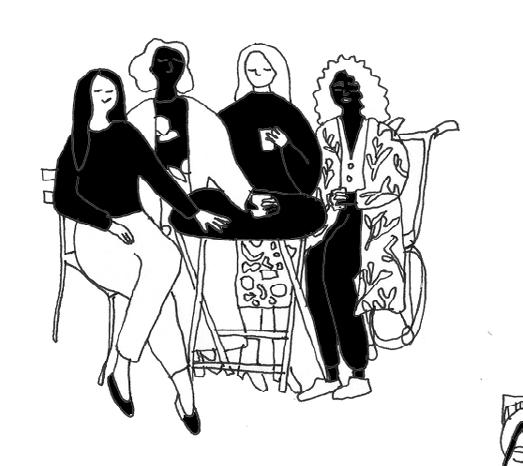
The Right to the Streets project enabled the arts organisations involved to form relationships with each other, with community grant projects and with students of Manchester School of Architecture.









Rosh, local resident
‘The mural really lifts the area, it makes it feel more family, more of a community.’
Fortitude by Cookie Love, OT Creative Space, 2023
Fortitude by Cookie Love
The fox, serving as a symbolic representation, embodies a creature capable of navigating urban environments with both grace and self-assurance and without trepidation. Urban foxes exude confidence, exemplifying empowerment within our streets and urban landscapes. The botanical arrangement will stand as a reflection of the multifaceted diversity within the community, representative of its strength, harmony and unity.
local resident
‘I feel like I could just walk into it, it’s beautiful.’

Open by Cookie Love and Ed Hicks, OT Creative Space, 2023
Open by Cookie Love and Ed Hicks
Designed and painted following several community workshops with groups of women, girls and local residents looking at how to make streets and public spaces safer and more welcoming for women and girls and all residents and discussing what motivates us to get outside. The mural is a painting of a woodland view overlooking a panorama of Manchester and its encompassing hills. In the foreground silhouettes and shadows symbolise challenges and uncertainty, juxtaposed by the inviting radiance of the clearing, a welcoming light through the trees signifying prosperity and hope. The composition offers space for introspection, and serenity through the beauty of nature.
Through the Manchester School of Architecture (MSA) Live Project programme, architecture students collaborated with community members to explore spatial interventions that address women and girls’ perceptions of safety. The final product of the collaboration was a Hygeia sculpture, a prototype for further interventions.
So what?
The sculpture provided a prototype for further action and was unveiled with a spoken word event. Within the event, experiences were shared and community members noted how important it had been for architects to join them; showing that their voices are important in shaping development.
Now what?
Greater Manchester Moving are looking for further opportunities to expand this collaboration across Greater Manchester. The MSA is looking to make funds available to students to allow them to expand their work in communities. Identifying key community stakeholders to work with is vital in the process, allowing students to embed their knowledge with local experiences.
‘It is vital that in a city region where so much development is happening that we work with communities and centralise the experiences of women and girls and their perceptions of safety in our built environments.’

Open Data Manchester (ODM) developed a place review tool that supports communities in exploring the urban environment in relation to women’s safety and gender inclusion. This was based on the community input received through walkabouts. ODM conducted usability testing to ensure the review’s relevance, appropriateness, and potential for future use by local organisations and updated the tool based on feedback.
ODM would like to see the Place Review used to help spread the Right to the Streets methodology and work to other areas. They would also like to see the release of Greater Manchester Police (GMP) crime data to explore the difference between an area’s crime statistics and the lived experiences of those who live in the area.
One participant who took part in the usability testing of the Place Review shared that they always know whether they feel safe or unsafe in a space but that it is very hard to pinpoint the reasons why. They said that the Place Review gave them the time, guidance and support to identify the specific reasons why a place in their area might feel unsafe and how they might be able to do something about it.
‘It gladdens my heart to see two young women moving this work forward.’
‘I think this workshop and chance to talk is great! Please do more.’
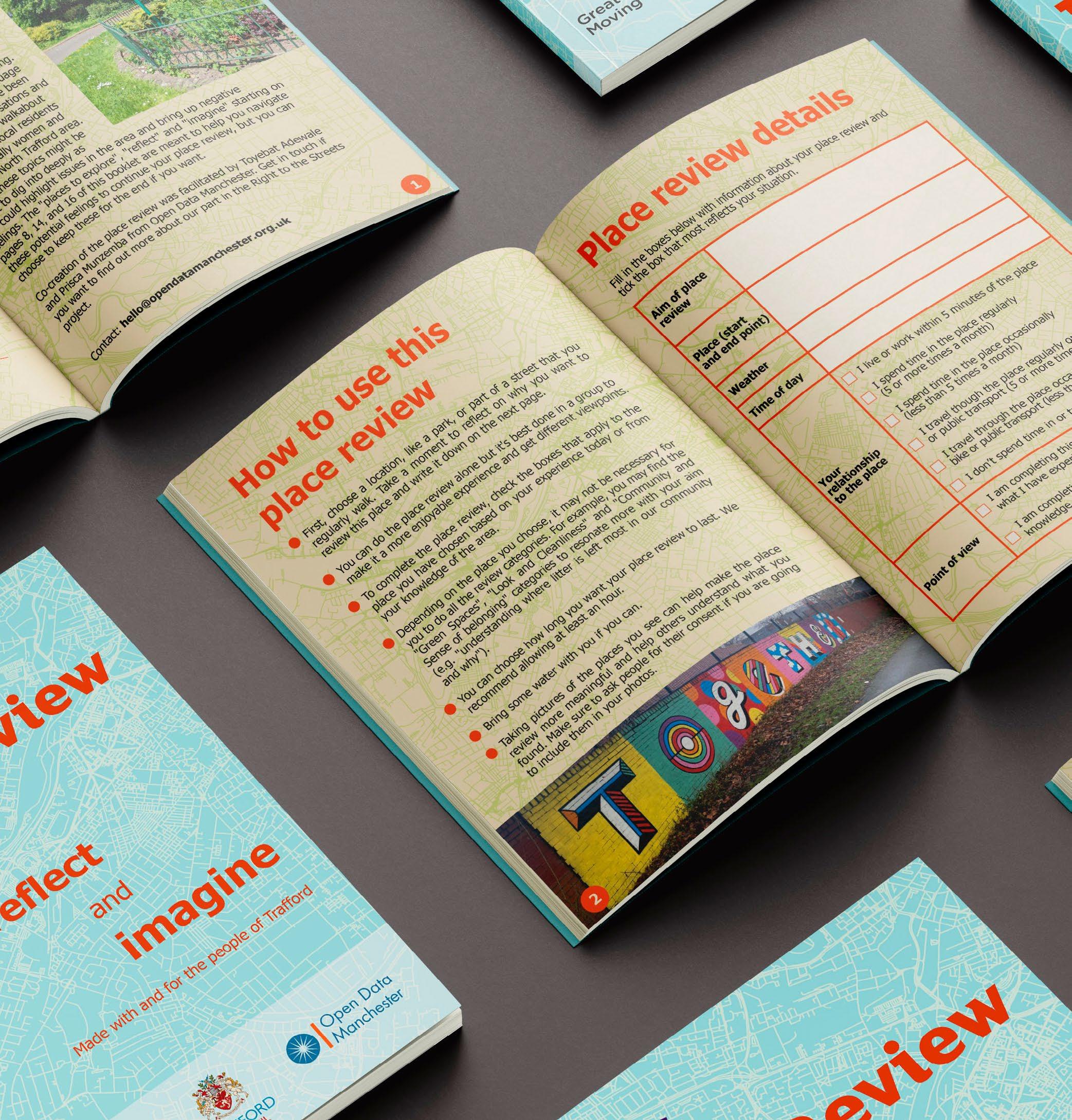
We know that local and national policy and laws affect the way our streets, cities, transport and public services are designed and managed and how resources are prioritised. Understanding what laws and policy are in play, the key levers for change and who has their hand on them, is key to making a long-term difference.
Unpicking the impact policy decisions have on the ground and finding ways to bridge the gap between policymakers and the people those decisions will impact was therefore a key part of our approach. The Right to the Streets programme included a performance-based form of participatory policymaking, known as Legislative Theatre. The initiative has also been the catalyst for a new UK Cooperative Councils policy lab exploring these themes further.
In the summer of 2023, a group of young people and adults from North Trafford came together to build a play reflecting their lived experiences of safety in parks, on public transport, near schools, on roads, and more, leading to a public Legislative Theatre event on 21 September 2023. In Legislative Theatre, audiences and policymakers watch a play based on the community actors’ experiences with oppressive policies and practices. Then, audiences act onstage to rehearse ways to confront the problems presented, and test new policies in real time. Actors and audiences propose ideas for new laws, rules and policies to address the problems, working together with advocates, organisers, and government representatives. Finally, participants vote on new rules, and policymakers commit to immediate actions.
The community group created a play, which addressed several issues around safety in public spaces including: gendered harassment and bullying in school and college settings; sexual harassment at tram and bus stops; disruption to public transport and public safety due to football matches and intoxicated fans; lack of community spaces for young people and adults to participate in outside of school and work hours; lack of safety in poorly lit, unkempt parks; lack of training or support to interrupt gendered harassment or violence; and difficulty accessing support from the council, the police, tram inspectors, or other authorities.
At the public Legislative Theatre event, 60 members of the public watched the play, discussed the problems and improvised new solutions onstage, leading to drafts of new policy ideas. Audiences and actors co-created a slate of policy proposals, voted on their top priorities, and got commitments by local policymakers and community leaders. Participating policymakers now have one month to take the first actions and share back to the public.
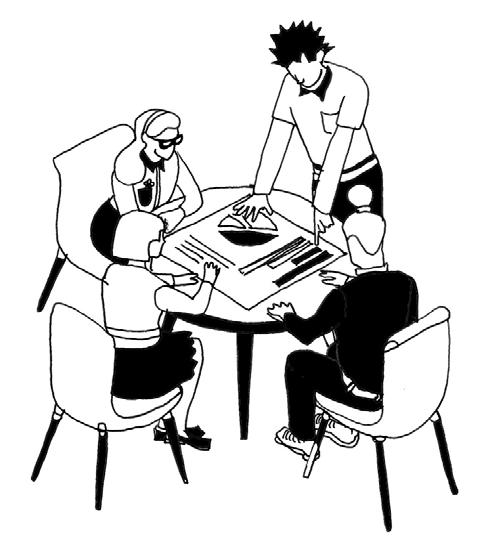
Legislative Theatre contributed to the creation of 3 policy proposals and 8 commitments to action. Policymakers now have one month to take the first actions which were publicly committed to on 21 September 2023.
70

Approximately 70 people took part in the Legislative Theatre Event. The Legislative Theatre process included one group of community actors (10 youths and adults); one youth co-facilitator; approximately 60 community audience members at the event, including 8 local policymakers (GMP, Trafford Council, TfGM, GMCA)
The people engaged during the process represented different age groups:
• 7 young people (15-18)
• 3 adults (30s-40s)
• one co-facilitator (21)
• one youth tech support (18)
• 4 volunteers

15
The actors and audience particularly appreciated seeing policymakers responding to ideas and questions, and having to make commitments on the spot. One policymaker from TfGM articulated aloud to the audience that he felt nervous in that moment. This was a great example of seeing the power dynamics of traditional policymaking reversed, so that the directly-impacted community members, both young people and adults, were in the driver’s seat: framing the problems, suggesting the solutions, interrogating the decision-makers, negotiating the implementation, and holding policymakers to account.
‘Thursday was fabulous: the audience had so much information, grit and determination to make a change!’
‘We loved working together and meeting new people: even though everyone had different perspectives, we had a shared goal and we really made a difference.’


Three key policy proposals were developed through the Legislative Theatre process and voted on. The following proposal for education campaigns against harassment and bystander intervention training was voted to be the biggest priority policy for Greater Manchester.
Culture-change campaign against harassment and violence, and in support of being an active bystander, particularly for boys and men, to be rolled out throughout Greater Manchester schools, sports institutions and public spaces.
a. Initiate a culture change campaign through training, education and early intervention, against sexual harassment, catcalling and gendered violence. This should involve having conversations and targeted campaigns with boys/men/staff in schools, institutions (such as football colleges and sporting arenas), and other public spaces (e.g. gyms). Given that some men feel vilified with regards to harassment issues, it is important to also address the broader issue of male socialisation. Model and demonstrate the actions and behaviour we do want to see, not just what we don’t want to see. ‘This IS OKAY;’ not just ‘this is NOT OKAY.’
b. Training and communications for everyone to be an active bystandereveryone has a role to play. To be delivered in a full range of settings across GM, for young people and adults, men and women.
c. Training can be delivered by workers from existing public sector organisations in these spaces, and co-designed by both young women and men. Role models and sports figures can be engaged to help deliver the message.
Other key policy proposals:
The other two key proposals to emerge and be developed through the Legislative Theatre are summarised below:
Make parks and public spaces safe and welcoming: Engage and resource youth workers and local community groups e.g. voluntary, community, faith and social enterprise networks, like “Friends of Parks” groups, to facilitate activities in parks and open spaces. Support community-designed improvements, so they feel more welcoming, including improved lighting and upkeep.
Prioritise safety on public transport: Extend the piloting of QR codes on trams, allowing riders to connect to GM Police live chat if they witness or experience harassment, to include direct access to a charity or advocacy group. To make it accessible, provide free WIFI on public transport, a phone number (not just 999) and access in various languages. Ensure live chat responders have expertise in supporting people experiencing sexual harassment and provide regular, ongoing training to all staff across Beenetwork operators.
Further ideas, proposals and tips put forward through the Legislative Theatre process:
Create opportunities for women, girls and diverse communities to have decision-making power in their own neighbourhoods. Ensure they are involved in ongoing policy co-creation and consultation and engage to test, review and ensure the language used in campaigns is representative and accessible to all.
Employ Community Connectors with lived experience of the realm they are working in.
Provide free public transport for everyone - having more people using public transport, and walking to and from transport stops, throughout the day and night, makes people feel safer and more welcome.
Ensure budget transparency and participatory budgeting to plan, design and safeguard public spaces (parks upkeep and design, street planning, cycle routes design etc.)
The data and stories tell us that street harassment and fear of sexual assault is widespread with 74% of women in the UK reporting experiences of unwanted sexual attention and 80% of women in Greater Manchester saying they don’t feel safe outside alone. It is a ‘cultural norm’.
This work is founded on the belief that harassment and violence is not normal or inevitable, that we can take action today to help prevent and reduce harm and together we can make harassment socially and culturally unacceptable. Through conversation with subject experts and local people, we decided to develop a local campaign to increase awareness of the impact of harassment amongst men and boys and equip people of all genders and ages with the know-how to take safe and appropriate action to prevent or reduce harm.
The No Place for It mass-media campaign, was designed by Diva Creative for 18-35 year olds, to:
• Raise awareness of what everyday sexual harassment towards women and girls looks like
• Highlight the ways it affects women’s freedom to move around
• Give people practical, low-risk tactics to disrupt and prevent sexual harassment when they witness it (bystander intervention).
The campaign was primarily delivered through Instagram (organic content and paid ads), with a series of animations crafted to increase emotional engagement and motivation to act, information-based posts providing ‘bite-sized bystander intervention training’ and rallying illustrated slogans to communicate the zero-tolerance message. This was supported by Snapchat video ads and paid out-of-home advertising and posters for use within the community. The focus was on the most commonplace types of harassment to ‘lower the bar’ on what is considered problematic and in need of challenging.
Paid advertising delivered these messages directly to a target audience who may not otherwise engage with this topic. There was a very positive response to the campaign tone, look and feel from stakeholders, although target
audience surveys have not yet been carried out. It was notable that adverts and organic content received very few negative comments, which is highly unusual for this topic. It is possible this was due to the very local nature of this campaign (which was emphasised in post captions and assets). Anecdotal evidence from Freedom Personal Safety, in relation to looking for people to share their own stories as part of this campaign suggests that this remains a difficult topic for people to be seen to talk about where they are known or identifiable.
During the Public Awareness Campaign, the project generated 23 Instagram paid ads providing 215 days of targeted advertising. This included 393,000+ impressions, reaching almost 75,000 accounts and generating more than 1,000 clicks through to the Right to the Streets Instagram wall.

26,700+
The Snapchat ads comprised of 15 paid ads providing 85 days of targeted advertising. They included 105,000+ impressions, with a combined reach of 26,700+ accounts.
129,000

75,000
Across the paid ads created by the campaign, the animations were viewed by 50% or almost 129,000 times.
Organic posting and sharing of additional community content on the Right to the Streets Instagram account attracted 389 followers, 9,537 organic post impressions across 8,050 accounts. Across the organic posts there were 732 likes and 108 shares.
389
The campaign has run for approximately 3 months in the local area of Trafford. However, social norms take time to shift and for that reason it would be ideal if:
• Re-posting of the organic content could be continued — keeping the Instagram feed active and visible
• Community organisations continue to share and post the content from their own social channels.
• Bursts of paid ads could be run periodically (this could re-use ad copy as created within the main campaign period).
A campaign toolkit and resource hub has been set up to allow the assets to be used more widely. Following-up with organisations who have downloaded these would be helpful, if Greater Manchester Resource Hub can provide this data.
The youngest member of the Diva team was able to put the bystander intervention tactics into use on a train journey while we were developing campaign content - showing that these tactics work in the real world and that knowing about them empowers you to take action. She shared that before this she wouldn’t have known how to help the woman.
‘A key aspect of No Place For It was to move from awareness raising to practical action — offering agency and empowerment around an issue that people may feel they cannot influence. As a behaviour change campaign this was vital as it gave a clear steer around an issue that can feel beyond people’s capacity to influence change.’


There’s no place for sexual harassment on our streets. Whatever our genderwe can all make a difference.
Help us get the message out.

This work has to be approached with care, thought and clarity of intention. Otherwise it can have unintended consequences including further victimising, re-traumatising and dividing the very people and communities we need to unite for common endeavour. The good news is that there are giants around the world who’ve been doing good work and research in this space for decades.
Alongside facilitating the participatory walkabouts with women and girls in the local area, the very first thing we did was commission Publica CIC to produce a literature review. This provided a solid underpinning to the Right to the Streets framework and approach.
Publica conducted a targeted literature review on gender, mobility and active lives. Drawing on evidence and many years of feminist scholarship, research and action, the review outlines the core principles and challenges of gender inclusive urban design, providing the underpinning framework for all the project’s workstreams. The review equips project partners and the wider community with information, in-depth knowledge and a multifaceted perspective to better understand public space through a gender lens. It is presented in the form of a set of postcards – which provide practical tools to plan and design gender inclusive public spaces.
So what
Starting from an intersectional understanding of public space, the work supports users to think across difference and acknowledge the different forms of power that intersect in the space we move through. The review highlighted that the concept of ‘active travel’ and ‘active lives’ for women and girls is about so much more than women’s safety. It is about belonging and participation, the liberty to have free and equal access to everything that the city has to offer and the liberty to remove barriers to freedom of movement. The engagement of several communities highlighted the importance of using inclusive language, representative of all its users and accessible to all.

It is fundamental to keep sharing insights into gender inclusive cities with the wider community and allow for the dissemination of the knowledge gathered. Similarly, it is crucial to cultivate the collective imagination to leave space for grassroots action. The literature review offers blank cards to address the need for imagination and knowledge creation spaces. Blank cards therefore offer an opportunity for people to explain what each theme means to them and add case studies that they know about or that they have experienced.
The literature review is composed of 17 illustrated postcards which expand on literature, statistics and reflections responding to the questions that the themes of Active Life, Safety and Belonging raise.

17
19


The Literature review collates 19 case studies showcasing both national and international best practice examples and capture, where possible, precedents from Greater Manchester.
The second part of the Literature Review collates a number of practical tools that can be used to address each theme through programmes, projects and initiatives. Each tool is accompanied by a case study showcasing best practice to bring the tool to life.
24



‘(I want to be a part of the discussion) to share experiences to help improve safety and inclusivity in public spaces. It’s important everyone feels safe where they live.’
‘I feel safer when spaces are clean and well-maintained because it gives an idea that people care and perhaps a watchful eye is being kept.’
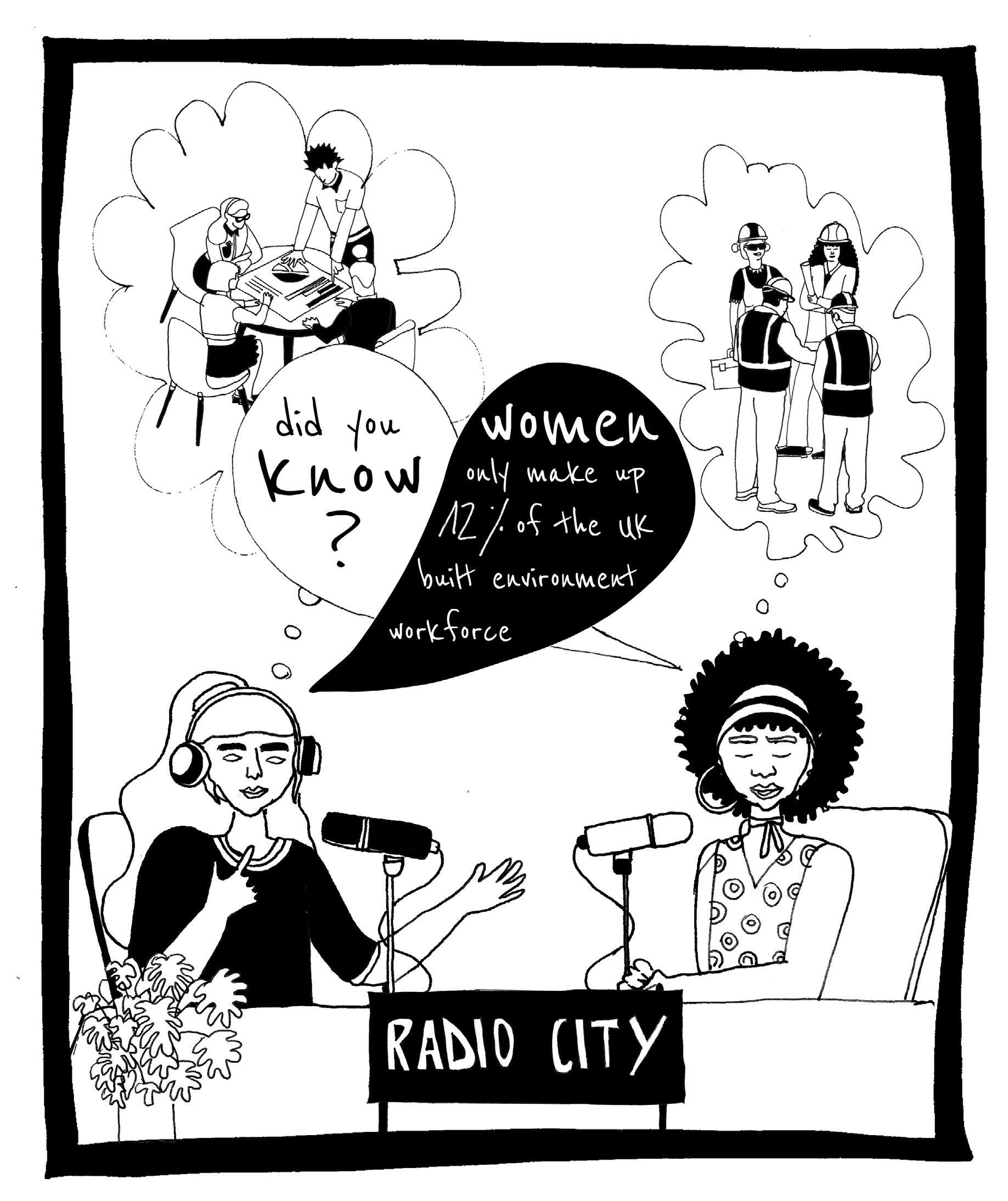


1Being able to articulate the problem is an impact in its own right.
Team Members:
‘The problem and revealing the reality with people’s hearts and minds, enabled learning (for ourselves and others).’
‘Making complex ideas feel accessible and personal.’
‘Being able to articulate together the futures we want’
‘Create safe spaces where feeling safe and welcome to share real lived experiences, needs and realities.’
You are changed by feminist action
You change feminist action
When you get involved in this work, it changes you personally. 2
Team Members:
‘I was confident to distract during an incident of sexual harassment on the tram.’
‘I feel empowered and I am now walking 40,000 steps when working in the area.’
‘I feel more confident in myself as a woman on the streets and want to spend my career advocating for change.’
‘By talking to lots of people about street harassment and how to intervene, I trust my fellow citizens to intervene if anything would happen to me and so I feel safer, every day.’
I belong I belong I belong
if I participate I belong
3
I belong
I belong
I belong I belong
I belong
I belong
I belong I belong
I belong
patriarchy
I belong
if we all belong
we are powerful
Participation makes people feel that they belong, they matter and that they are cared for. This is an essential prerequisite to feeling safe and powerful to make change.
Team Members:
‘Intentional investments in facilitating community action is essential for long term transformative change.’
‘Community-led approaches can be sustained in the longer term because they are not reliant on transient funding or external facilitation.’
4 We are not alone, there is an abundace of actions to connect to.
Team Members:
‘We loved working together and meeting new people: even though everyone had different perspectives, we had a shared goal and really made a difference.’
5There are a variety of approaches to gender inclusive public spaces which have different impacts on the users of these spaces.
Team Members:
‘Power over: This type of power takes the perspective that you must control others in order to achieve the desired outcome. It requires and enforces action. ’
‘Power to: This type of power acknowledges the need to remove barriers to community action in order for people to exercise their full potential to make changes in their communities. It opens possibilities for action without requiring or enforcing it’
6
Every action has a ripple.
We are not alone, there is an abudnace of actions to connect to.
Team Members:
‘Connected people and strengthened local networks have shown (some of) what is possible’
‘Empowering individuals to feel willing and able to be an active bystander and hearing that they have taken action as a result of attending the training. We trained 310 people who will talk to at least 2 other people each about active bystandership. This is the ripple!’
MIC Media provided the full production (including, ideation, pre/postproduction, recording, and marketing support) to produce two, 8-episode podcast series totalling 16 episodes with over 100 different guests to accompany Right to the Streets.
Series 1 kick-started the safer streets conversation with examples of existing and upcoming strategies, it explored challenges, generated ideas for change and gathered learning from people and partners working at a local, regional and national level for safer streets. The series featured conversations with decision-makers, leaders and local voices including Nazir Afzal, ex-Chief Prosecutor, GM Deputy Mayor Kate Green, GMP, TGfM, GMCA, Trafford Council, Manchester United Foundation and Stretford High School.
Series 2 captured the journey, projects and learning of Right to the Streets partnership to help inspire others to test, adopt or develop similar approaches.
Starting the conversation: discussions about safer streets for women and girls are often un/under-told. Existing narratives can be one-sided or unlinked. The podcast offers an easy-to-follow account of the main issues surrounding safer streets and invites people to continue the conversation.
Amplifying voices: most of the people and projects have never had their voices or stories told or heard in this way. The ripple effect is powerful.
Influence: the long-term challenge is to inspire service providers, politicians, commissioners, community organisations and individuals across Greater Manchester and beyond, to take the steps to create streets, parks and public spaces where women and girls feel safe, like they belong and are invited to be active.
Legacy: by capturing voices, stories and experiences with ‘audio’ and publishing publicly and for free, the podcasts ensure a lasting legacy for not only the project but for the important topics covered.
MIC Media created the podcast series so that the content is as evergreen as possible. This means that the conversations, ideas, and topics covered stay relevant whether you listen when it first comes out, or a year later. MIC Media worked closely with the Greater Manchester Moving marketing team (who manage the marketing side of the podcast) to share episodes on their marketing channels, especially if there’s anything relevant happening in the news, awareness days, or Greater Manchester Moving projects that link to specific episode content. This is vital to keep the podcast in the spotlight and increase discoverability.
The GM Moving Podcast: Right to the Streets series one
Work that includes both direct care activities such as feeding a baby or nursing a family member as well as indirect care such as cooking and cleaning. This work is often an unpaid but essential dimension of the world of work (International Labour Office, 2018).
When someone carries out unwanted sexual behaviour towards another person that makes them feel upset, scared, offended or humiliated. It is also when someone carries out this behaviour with the intention of making someone else feel that way, even if the other person didn’t feel upset, scared, offended or humiliated (Rape Crisis, 2021a).
Active support for the rights of a minority or marginalised group without being a member of it (Oxford English Dictionary, 2021).
Publica produced infographics, interviews and blog posts to accompany the Right to the Streets podcast.
These cover topics such as active lives, culture and nightlife, and public health. Interviews focus on insights and best practices from experts who are engaging with the Manchester community while the infographics bring statistics about gender disparities to life, alongside illustrations of more hopeful futures to inspire action.
The work women do in order to feel safe. It can include taking longer walking routes after dark to avoid parks or underpasses, keeping in contact with friends and family when out alone or gripping keys between knuckles.
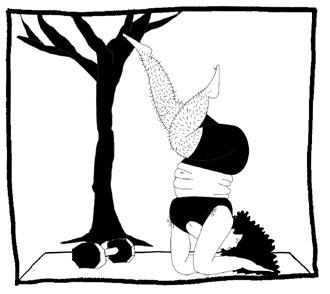

‘Safety work’ is the work women do in order to feel safe. It can include taking longer walking routes after dark to avoid parks or underpasses, keeping in contact with friends and family when out alone or gripping keys between knuckles.
When women are taught to do this work, it sends the message that it is their individual responsibility to protect themselves from violence. This messaging ultimately puts limits on the freedom of women moving through public space.

the spaces when opportunities arise.


Affordability

Safety Work

Women in general have less access are more reliant on infrastructure services in order to be active. Women have more toilet needs than men, people with children need more seating space, drinking fountains etc.
Shopping centres, for example, provide toilets and other amenities, but these are more accessible to wealthier people.
When women are active in public spaces, they often experience sexual harassment. A survey of 2,000 women in the UK found that 25% of runners experienced harassment on a regular basis.
Black women, women of colour, disabled women, trans women and women from other marginalised groups experience more and different types of harassment than cisgendered, straight, white, able bodied women.
Harrasment
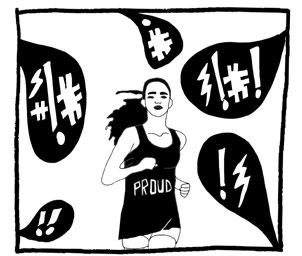
Publica also produced and play-tested a series of games to support project partners, designers, planners, policymakers and the wider community to understand public space through a gender lens. Using challenge statements and tools, gameplay builds participant expertise by:
• Teaching key definitions about gender, inclusion and the built environment
• Identifying key challenges
• Highlighting available tools to act
• Illuminating how people’s backgrounds affect their lived experiences and needs
• Exploring visions for safer public spaces
Making a difference to women, girls and gender diverse people’s lives on the ground requires us to keep this conversation alive in social consciousness. It means continuing to listen, to learn from each other and to adapt our behaviours and decisions accordingly. Publica hopes the resources they have developed through this work will continue to nourish this conversation. They also intend to continue to develop them as they gain more feedback on how well the resources are working in practice. Publica hopes that the resources are useful to communities outside of Manchester and globally. They are in conversation with groups from Mexico and India who are interested in translating these resources to be relevant in their own contexts.
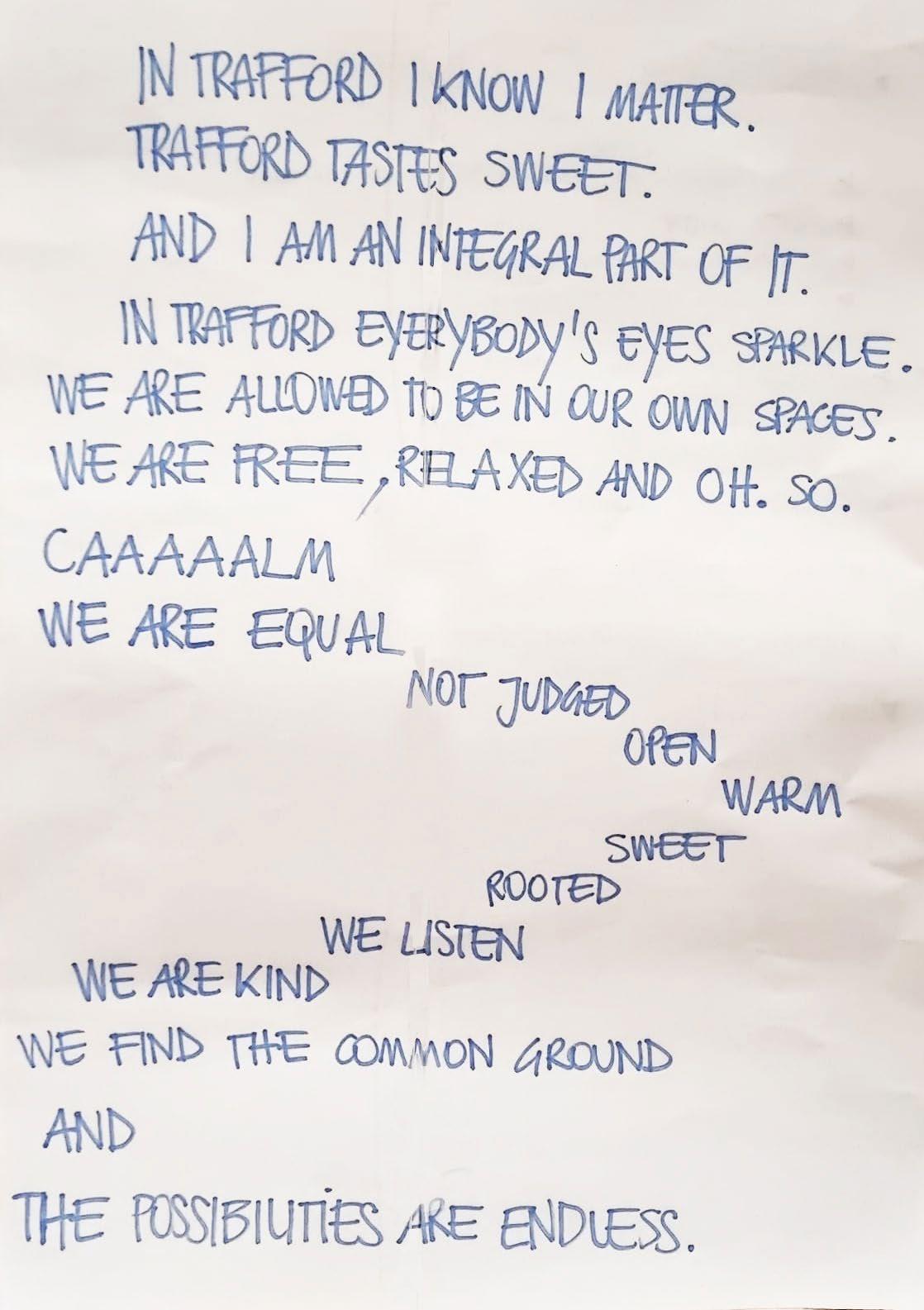
Spreading Right to the Streets learning, resources, outputs and recommendations through other events and talks including:
• Trafford Moving Strategy Launch event, 22nd March 2023
• National Walking and Cycling Summit hosted by Living Streets, Leeds, 23rd March 2023
• London Walking and Cycling Summit, Westminster, 9th June 2023
• Kantar case story for Home Office Safer Streets Fund, October 2023
• ‘How do we enable healthy, active places for all’ GM Moving event hosted with Kim Leadbeater, MP and Andy Burnham, Mayor of Greater Manchester, Manchester 6th October 2023
• Interview with Imogen Halls, GM Moving and Jane Dennison, MileShyClub on BBC Radio Manchester on 12th October 2023
• Greater Manchester Ageing in Place Learning Event, Manchester 18th October 2023
• Local Transport Summit, Sheffield, 19th October 2023
• UK Network of Age-friendly Communities: Crime and safety event, 26th October 2023
• Shared with Sport England CEO and Director of Equalities, Manchester, 31st October 2023
• ‘Tackling street harassment of women’ GM Moving event with University of Manchester, Manchester on 6th November 2023
• Active Travel England film, November 2023
• GMCA #IsThisOk? campaign and podcast signposts to Right to the Streets
• Learning shared with GM Moving team and Board, Manchester 7th December 2023
• GM4Women2028 events in Trafford, Wigan and Oldham



These are some of the key themes that emerged through the work as being important to local people and communities:
A sense of active community: people make people feel safer
Active care for each other: active bystanders, trusted, familiar, authority
Experiences of participation: nurture ownership and connection
Feminist street design & planning: accessible, creatively lit, places to sit
Feeling of belonging: seeing yourself reflected in street space
Places are welcoming: clean, green, cared for, stuff to do, see, hear, engage
Everyone has a role to play in making safer streets and welcoming spaces for all: be the change you want to see. Here are some ideas about what you can do. Remember, the possibilities are endless...
1. Be an active bystander
2. Spread the conversation in your social networks
3. Increase diversity and understanding of workforce
4. Apply feminist design principles
5. Involve women in policymaking
6. Grow the movement
Here are some more ideas people have shared over the last year about things to do:
Create resources that help communities to have useful conversations about their own experiences and needs, rather than attempting to educate them on a particular topic. Understand how people’s experiences vary.
Actively reflect over the inclusivity of the spaces you own or manage. Consult users to ask whether these spaces feel inclusive and welcoming.
Dedicate space and time to cultivate collective imagination and collective knowledge creation.
Get creative! Involve local creative minds and mediums to have an impact.
Face to face sessions are crucial to building relationships, trust and sharing information.
Ensure engagement is implemented at every stage of a project, from the inception to the design, delivery and evaluation of the project itself. Provide multiple points of entry and design different ways in which people can be invited to join in the process of change-making.
Use the #NoPlaceForIt campaign resources as a starting point for your own public culture change campaign.
Read the Literature Review! Test the temporary or permanent implementation of case studies locally i.e. representation in public art.
Build on the trusted relationships, channels and community connections that already exist. Rather than trying to ‘create something new’.
Cultivate grassroots action.
Involving communities in leading the work takes longer, but results in better outcomes for the community.
Small gestures go a long way and have a big impact.
Produce your own podcast!
Establish an annual ‘Right to the Streets’ assessment and scrutiny group.
With thanks to everyone involved including the following groups and organisations:
Activity Alliance
African Caribbean Care Group
Alchemy Arts
BBC Radio Manchester
Bee Pedal Ready
Beyond Empower
BluSci
Breathchamps
Collaborative Women
Diva Creative Foundation 92
Freedom Personal Safety
Friends of Gorse Hill Park
Friends of Hullard Park
Friends of Seymour Park
Friends of Victoria Park
GM Ageing Hub
GM Moving
GM4Women
GMCA Women and Girls Equality Panel
Gorgeous Gorse Hill
Gorse Hill Methodist Church
Gorse Hill Primary School
Gorse Hill Studios
Greater Manchester Combined Authority
Greater Manchester Police
Home Office
Kantar
Lancashire County Criicket
Legislative Theatre
Limelight
Living Streets
Loiterers Resistance Movement
Love Old Trafford
Manchester United Foundation
Mandem Meet Up
MIC Media
Mile Shy Club
Mindful E-Learning
MMU School of Architecture
NHS Trust
Open Data Manchester
OT Creative
Our Goal
Pankurst Trust
Progressive Masculinity
Public Health
Publica
Safe and Sound
Seymour Park Primary
St John’s
Stretford High School
Stretford Public Hall
Stretford Stride
TfGM
The Guardian
Theatre of the Senses
They Who Play
Thrive Trafford
Trafford College
Trafford Community Collective
Trafford Council
Trafford Domestic Abuse Services
TUF-C
UA92
University of Leeds
University of Manchester
Violence Reduction Unit
WETA
Wheels for All Women’s Football Board
Young Identities
L&L’s Bakery
MC Streetfood
Mother May I

COMMUNITY
Produced by
Publica CIC
Hamilton House
1 Temple Avenue, Temple London, EC2Y 0HA
+44 (0)207 490 3986
www.publica.co.uk
This publication and its contents are © Greater Manchester Moving and Publica, November 2023. All rights reserved. Publica retains all intellectual property (IP) rights and copyright associated with the illustrations in this report, as set out in Publica’s terms and conditions. Further publication or use will require copyright usage approval.
